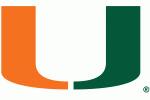Chances are you don't need the update, but in case you're a little behind, the deal is this: One day, former UCLA basketball player Ed O'Bannon noticed he was in a video game and realized he hadn't seen a dime of the money from it. So he sued - Electronic Arts for using his likeness and not paying him and the NCAA for licensing it.
 That was nearly four years ago. Much legal wrangling has gone on since then, which is not entirely important except to note that the defendants have been totally unsuccessful in getting the case dismissed. Which either means a settlement (bad for the NCAA) or a trial (very risky for the NCAA.) Either way, the case trundles toward a resolution sometime in another few years.
That was nearly four years ago. Much legal wrangling has gone on since then, which is not entirely important except to note that the defendants have been totally unsuccessful in getting the case dismissed. Which either means a settlement (bad for the NCAA) or a trial (very risky for the NCAA.) Either way, the case trundles toward a resolution sometime in another few years.
It's really, really bad form to be cheering for the NCAA in this one. It feels like taking a big bite of a slime sandwich. The idea goes something like this:
-- The NCAA puts these players - football and basketball, we're talking about here - through long hours and uses their labor to make a lot of money.
-- That money then goes to line various pockets. Maybe it pays exorbitant coaching salaries, like Nick Saban's $5.3 million per year, which when other compensation is included probably rolls in closer to about $8 million. Maybe it's used to build extravagant palaces, including waterfalls in the locker room. Whatever the use, it goes to something other than the players who actually appear on TV.
-- This is bad.
I'm here to tell you why it's not. And why, if Ed O'Bannon gets the USFL treatment, the world will be better off. (History lesson: The USFL won their antitrust lawsuit against the NFL and received for their trouble a check for $3.76, which has never been cashed.)
Here's the problem. O'Bannon is asking for a lot of things. First he wants a lot of money to cover all those years that players had their likenesses used, seemingly without permission. Players do waive their right to their likenesses as regards their college careers, but O'Bannon argues this is a violation of antitrust law. I can't really argue against this part. Jake McGee is a white, 6'6", 250 lb tight end with very good pass-catching skills and average blocking skills who wears #83 for the Virginia Cavaliers. So when EA puts out a video game and includes a white, 6'6", 250 lb tight end with very good pass-catching skills and average blocking skills who wears #83 for the Virginia Cavaliers, not many courts will accept the argument that that isn't Jake McGee.
The problem is that the NCAA and EA aren't competitors. If an agreement was made between GM and Toyota to fix the price of their products, that would be antitrust; the NCAA and EA don't compete. It's perfectly legitimate for the NCAA to license out likenesses to which it has a legal right; whether it's legally fair for them to have that legal right in perpetuity is something the courts will decide.
So there are, like, jillions of dollars of damages at stake there, because antitrust law triples any damages automatically. But those are one-time fees. What O'Bannon is also demanding is that players receive 50% of future TV revenues. Current and future players.
I wish there were more clarity on that, because to me, that's the huge kicker. Even the text of the lawsuit doesn't define that very well. Nobody is really sure what this means, and every article on the subject just says "players" as if that answers it. Players who regularly appear on TV? Players who appear on TV once? Every athlete on the roster of a team? What if the school never appears on TV? What if Florida State is on TV all the time and Wake Forest is only occasionally? What if not a single Coppin State game ever shows up on TV? Schools tend to receive TV distributions equally within a conference regardless of how much their value contributed to that revenue, so one would imagine that Wake is on the hook just as much as FSU. But if FSU's softball team plays on TV and BC's never does, which softball players get a cut?
Then of course, we have to ask about the form of these payments. Can their scholarships count or is it straight cash? O'Bannon is opening up a major can of worms here.
What bugs me is this, though. It is very easy to root against the scummy ol' NCAA here, for the nasty exploitation of their players. Emotion leads us to believe that of course the players deserve to be compensated for their efforts. Of course they should get a cut of their jersey sales and video game sales and so on. There are a load of articles gleefully predicting the demise of the NCAA, some in the guise of "a guide to the lawsuit," which is more like "why you should hate those bastards."
Well, let's try something. Let's talk in those terms: athletes should get what they deserve, not what the NCAA and their schools allow them to have. Chris Webber semi-famously wondered why he had to scrounge for pizza money while his jersey was on sale in the school store; this was part of the impetus for all the under-the-table money the Fab Five took that sent Michigan into basketball irrelevance for fifteen years. Fine: athletes like Webber should get what they deserve.
But let's give everyone what they deserve. And what do wrestlers, runners, swimmers, volleyball players, tennis players, rowers, gymnasts, golfers, and other obscure athletes deserve? Nothing. NOT A DARN THING. Screw them, man - they don't sell jerseys, drive ratings, or pack stadiums. They're leeches on the system. Forget scholarships - they should pay for the right to play their sport in dedicated facilities with fancy uniforms and they definitely shouldn't be getting $8.8 million tennis facilities. What a country where a tennis player whose audience is smaller than my rec league soccer games can shower and change in donated luxury.
The gleeful vultures like Charles Pierce would have you believe it's "skyrocketing coaching salaries" and straw men in suits taking all this money. That's not how this works. Yes, part of the money goes to gold-plated facilities and expensive coaches - all to attract these exploited players, who eat that shit up like the fat kid at the donut buffet. Nothing recruits like excess. Kids get a personal tour of Alabama's country-club locker room facilities from a coaching legend and they suddenly forget all about the fact that their future appearance on ESPN is paying for all this. Or they realize "man, I get to play on ESPN!"
But what really happens is that a whole lot of opportunities are being paid for by all this TV money. In what I would call zero-revenue sports (swimming, wrestling, tennis, etc.), the NCAA allows a maximum of 71.1 scholarships, and in low-revenue sports (soccer, baseball, lacrosse, hockey) there are a further 52.2 for a total of 123.3. Let's say the average school offers 75 of them at an average cost of $20,000 each (somewhere in the middle between in-state and out-of-state tuition); the school spends $1.5 million on scholarships, and probably a further $5-10 million total on coaches, and another few million a year on facility maintenance.
O'Bannon wants to take about $10 million - by instantly cutting schools' TV revenue in half and sending it I don't know where. Schools may be able to count scholarship money in that and thus substantially reduce the financial hit, but I doubt it; O'Bannon is already contending that a scholarship does not equal compensation.
Title IX proponents have always said that they think schools ought to get themselves in compliance by spending more money on women's sports, not by cutting men's. These people live in gumdrop-rainbow-land. In real life, schools have always complied with Title IX by killing off opportunities for men. Because they can't make money appear out of thin air, that's why. It's a scarce resource, in the economic sense of the word.
They'll deal with O'Bannon compliance the same way. They won't wave magic wands and hand four-figure checks to all their players and still pay for a tennis team. They'll likely face the choice between a football team and a bunch of non-revenue sports. The wave of new D-I football teams like Georgia State and South Alabama is because most schools think football will raise their profile and visibility and thus the expenditures are worth it for the school. They're probably right. Which means tennis and swimming go right out the window. Quite a few schools won't be able to afford Division I any more, because that requires six each of men's and women's sports. Other reforms aside, schools are not going to stop paying coaches and building nice facilities, they're just going to do so for fewer sports. That's how they've always operated and that's how they'll continue to operate.
The overstuffing of D-I aside, this means way fewer opportunities. Especially for men, since Title IX makes it that much harder to cut women's sports. Play football or don't play. No scholarship for you. There are a ton of reasonable suggestions out there that could put to rest quite a few of these problems. Trust funds and the like - then you could even put names on the jerseys and maybe even sell more of them that way. Salary caps for coaches. What have you. There are no possible reasonable suggestions to fairly divvy up TV money if you are talking about writing checks directly out of the TV pot, because no matter how you do it someone can always make a case they deserve more than the next guy. Ed O'Bannon thinks he is taking money from rich guys in suits and giving it to exploited athletes; he's really just setting up a mechanism to move money from some athletes to others. Not a good future.



















